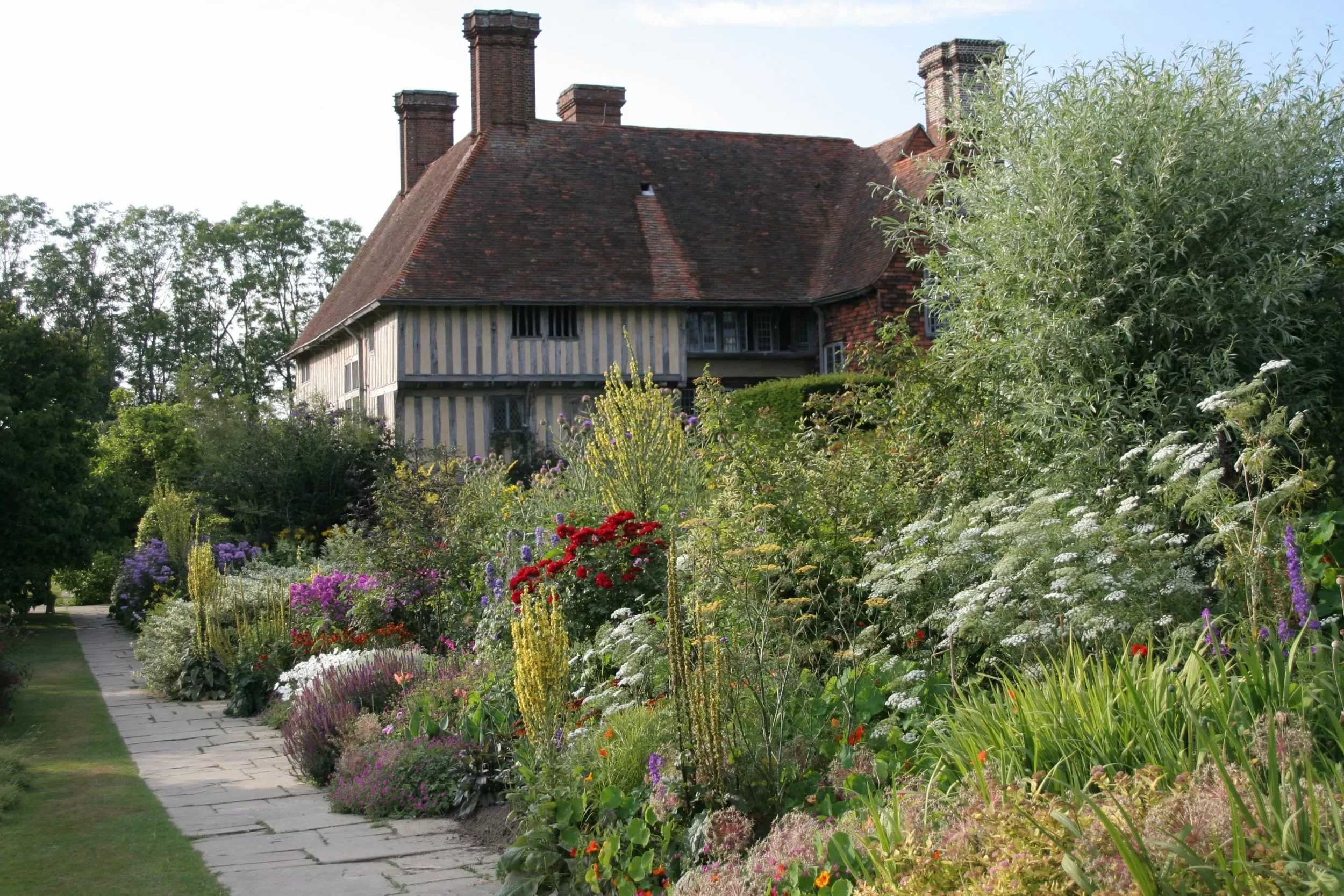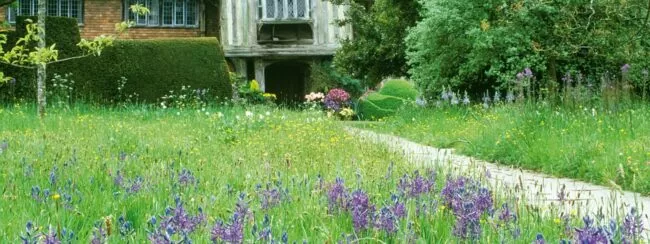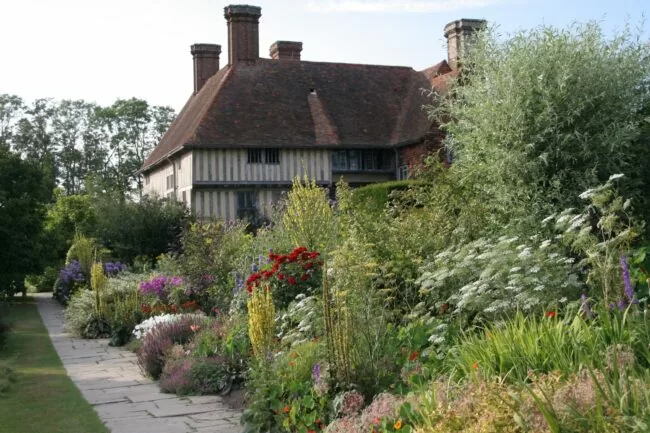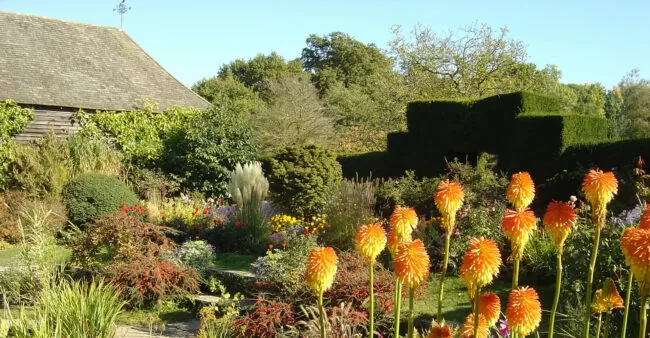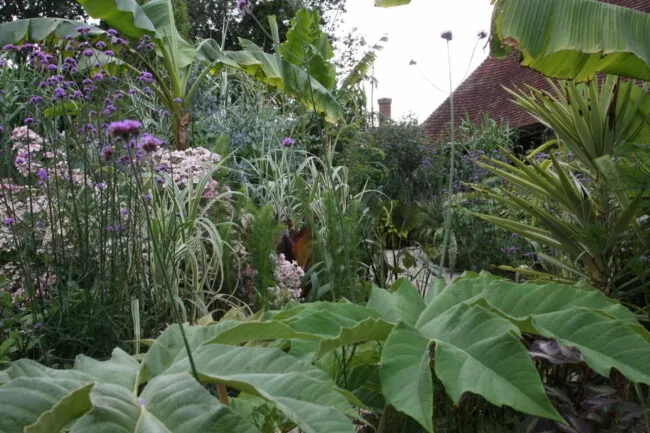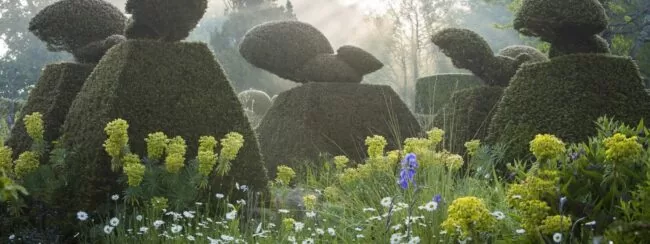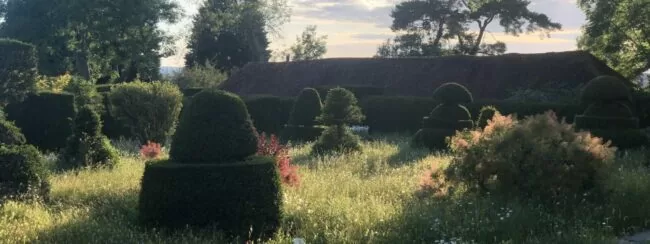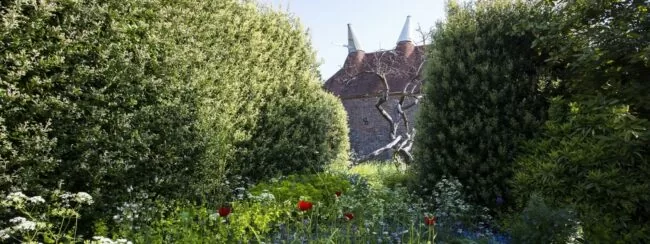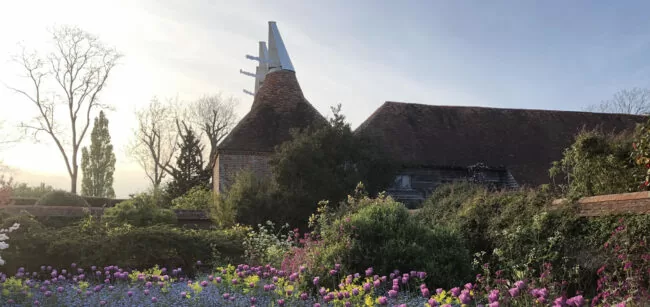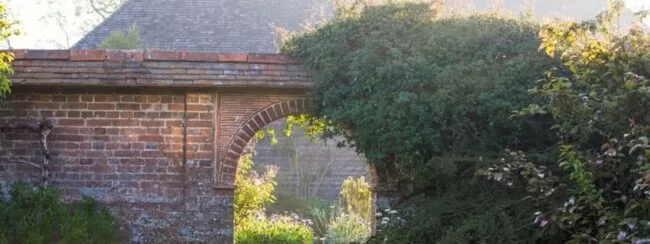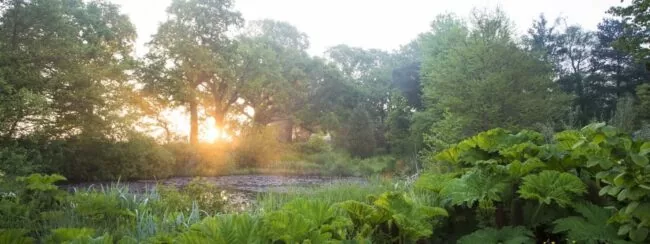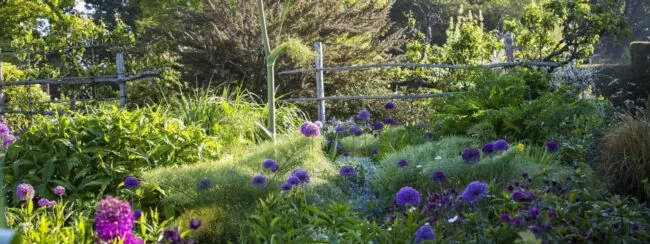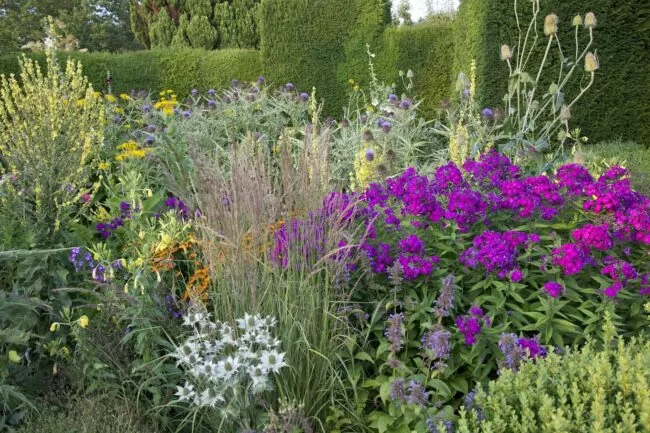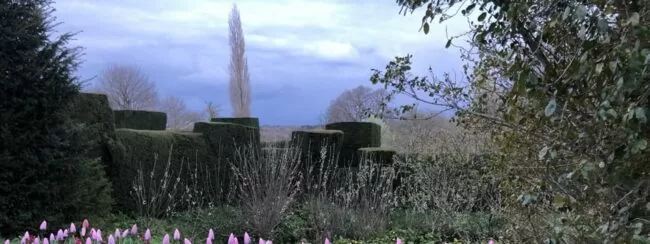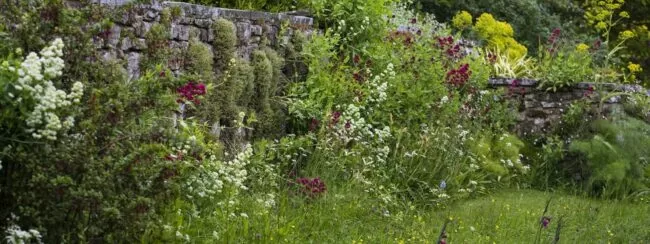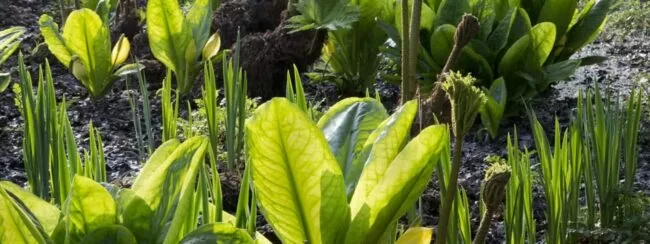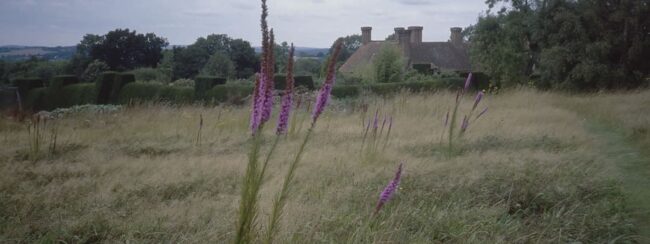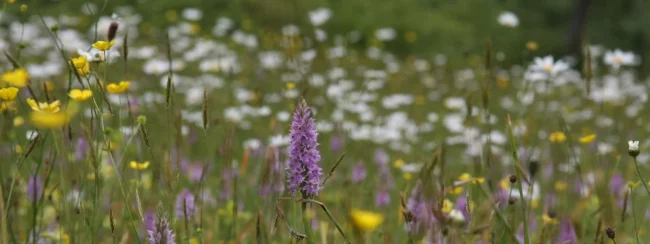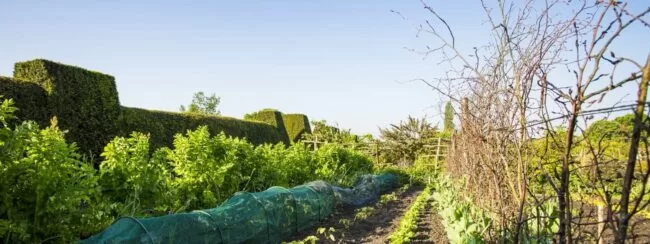The Long Border
Great Dixter’s garden in Christopher Lloyd’s words.
Rising by way of Lutyens’ circular steps, you reach a platform, on which were originally planted a pair of black mulberries, Morus nigra. Only one now remains and that was mutilated in the 1987 storm, but has made much new growth. The pair became too large for their site, so I did not replace the other, after that broke up in an earlier gale. Against the house wall, here, is an apricot, planted soon after the restorations. It fruits prodigiously in some years.
We are now at the bottom of the main section of the Long Border. Note the effective arrangement whereby it is separated from the informality of the orchard meadow, by a flagstone path, broad enough to allow of plants flowing onto it, and by a strip of mown grass. The orchard itself also has mown paths running through it.
They not only allow access to its various parts but also indicate that the pervading roughness of the July scene is no accident. Lutyens’ seat designs at the top of the Long Border, and in the Topiary Garden, have been twice replicated when renewal became necessary. Their simplicity reflects the timber structure of the house itself.
The border’s season of interest is principally aimed at a mid-June to mid-August period, but extends, albeit to a lesser degree at each end, from April to October. I believe that no gaps, showing bare earth, should be visible from late May on, apart from the most recent replacement plantings. The effect should be of a closely woven tapestry. I do not at all mind bringing some tall plants to the border’s front, so long as an open texture allows the eye to see past them. Conversely, channels of low growth can be allowed, at times, to run to the back of the border.
For all the work that goes into it, I want the border to look exuberant and uncontrived. Self-sowers, like verbascums and Verbena bonariensis, help towards this.
